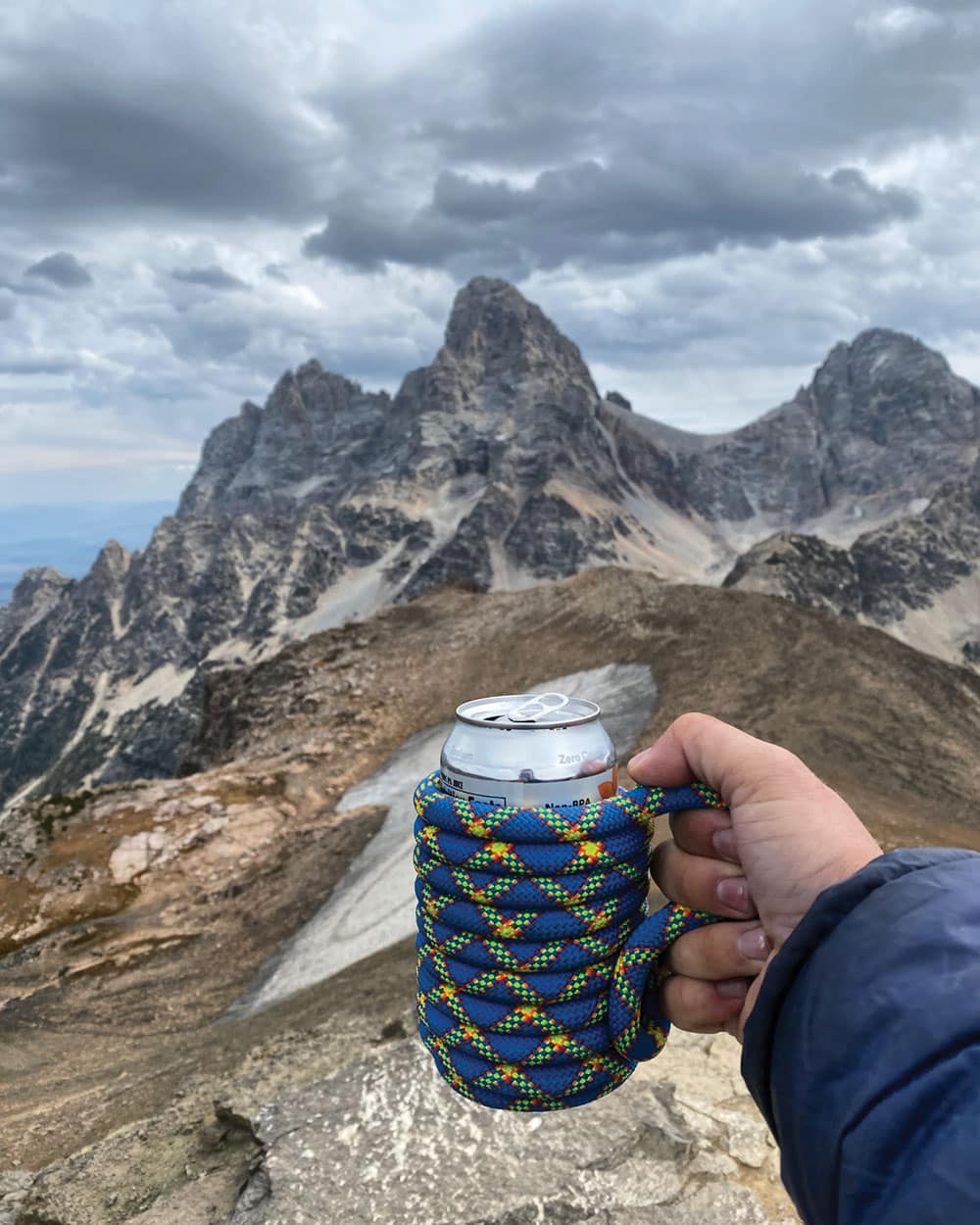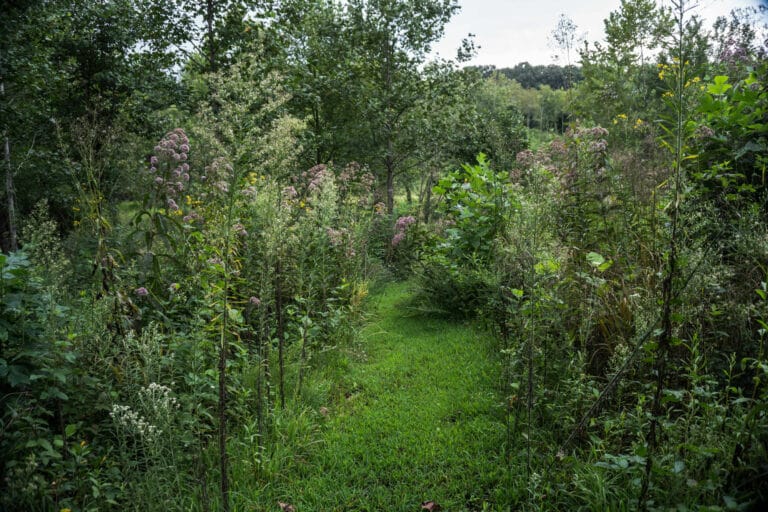There comes a point when every climbing rope is no longer safe to use. In a relatively short period of time, it shifts from an essential lifeline into a dangerous liability, as wear and tear catch up and fibers break down. At that point, the rope is retired and a new one procured.
Maybe the old rope ends up in the back of a closet, a climber unable to let go of the emotional attachment to an object that kept them vertical countless times. But usually it ends up in a landfill.
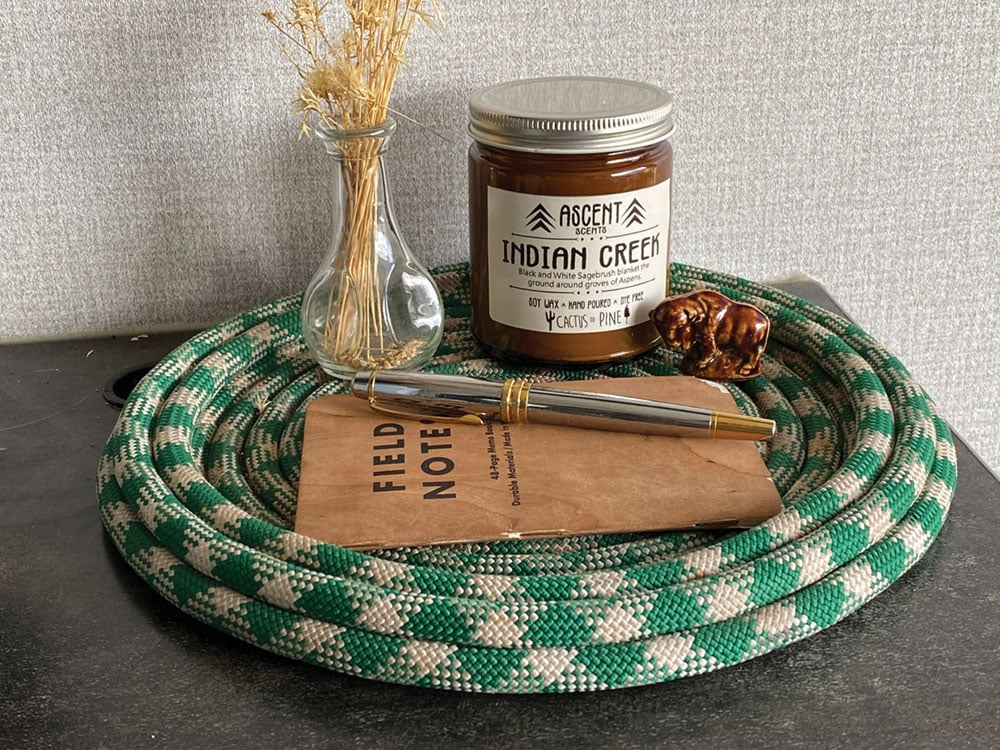
Not long after Shelby Treichler of Cactus to Pine started climbing, she noticed piles of unusable rope stacked in the corner of her gym, waiting to be disposed of properly. For insurance purposes, gym owners typically cut a rope into shorter pieces and toss them, so they are not liable if someone were to use it in compromised condition. But Treichler saw ropes no longer safe for climbing purposes as more than trash. “I call it an infinite resource because there’s always somebody retiring a rope,” she said. “From a business perspective, being able to take your raw material and get it for free makes the most sense.”
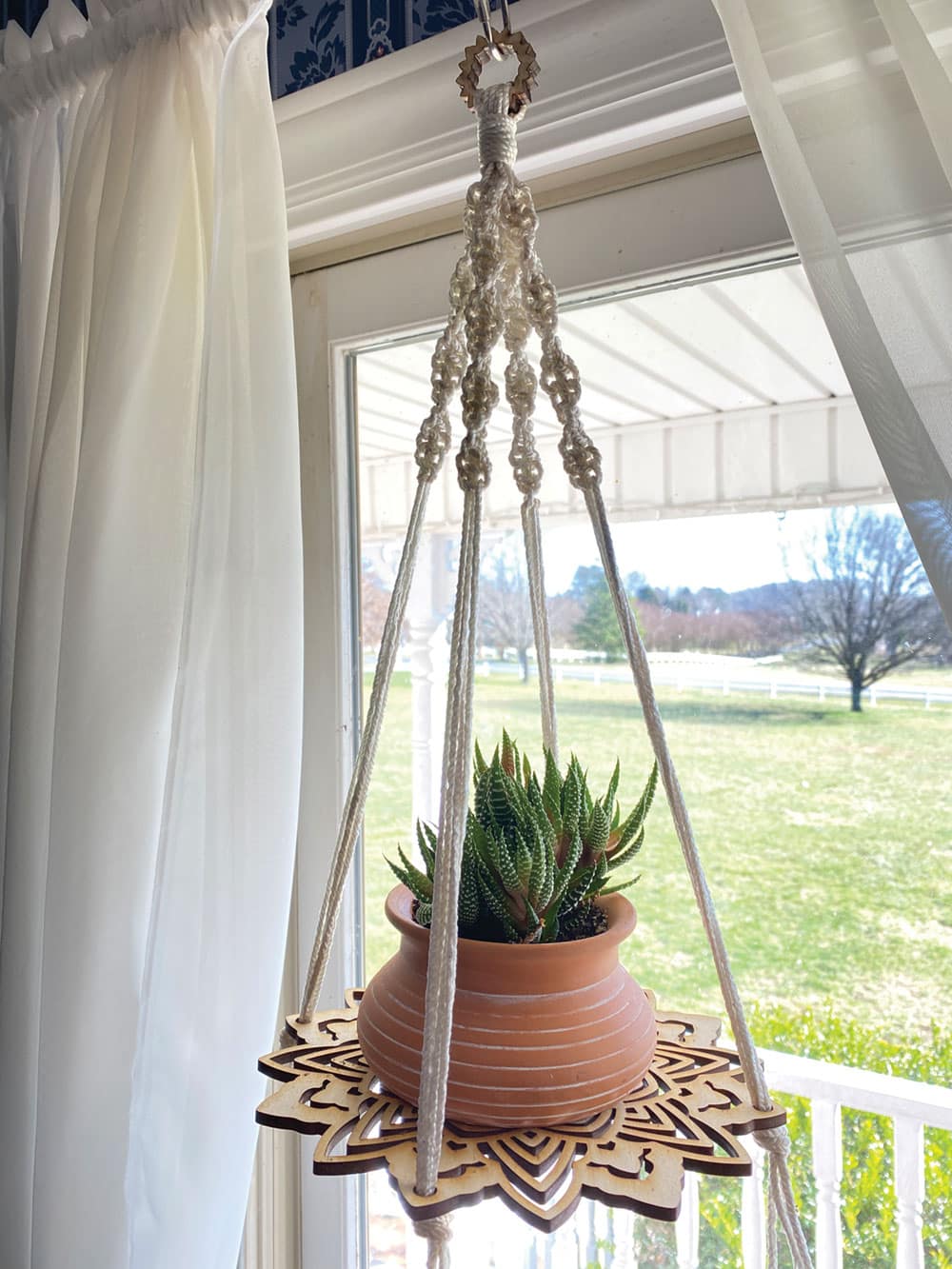
Treichler started playing around with the scraps and figuring out what new objects she could create to help keep climbing gear out of landfills. Ropes, in particular, ranging from 30 to 80 meters long, offered plenty of material. “It’s been a lot of trial and error and getting my fingers stuck to stuff,” she said. From bowls and drink coozies made from rope to gear racks made with bolt hangers, she’s always experimenting with new ideas. Treichler even learned how to macrame plant and wall hangings in order to use the crisp white rope core, upcycling as many parts of the rope as possible.
When it comes to trying new designs, she says there’s no risk in taking something out of the dumpster and experimenting. Treichler collects used ropes from a variety of climbing gyms, guiding companies, and individual climbers. “If it doesn’t work out, it’s back in the dumpster where it originally started,” she said.
But for Treichler, pursuing imaginative upcycled creations has worked out enough for her to turn Cactus to Pine into a full-time business that sells products online and at climbing festivals. She particularly enjoys working her booth at the festivals, where she can talk to fellow climbers about the new life being given to old pieces of gear.
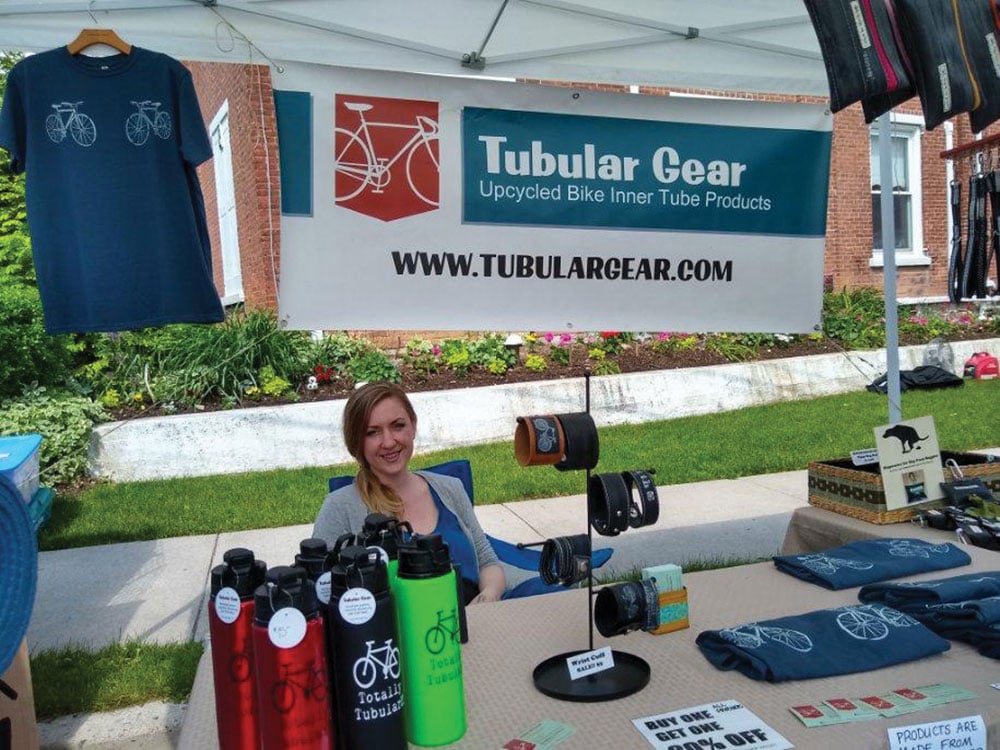
Even though Treichler and other creators are finding new ways to upcycle climbing ropes, most of them still end up in landfills. The same goes for bicycle tubes. But Erin McGann is finding creative solutions for used bike treads at her company Tubular Gear. “Although riding a bike is certainly a more environmentally friendly way of commuting, there are still materials that are left to sit in the landfill if they are not upcycled,” McGann said, also noting that rubber is a material that’s extremely hard to recycle. “I have more tubes than I know what to do with at this point.”
McGann started Tubular seven years ago after leaving her job teaching high school art. Once she started playing around with tubes, she discovered they could be worked in a similar way to leather. Using an industrial sewing machine to get through thick layers of rubber, she crafts wallets, dog leashes and collars, yoga mats, earrings, and a variety of other home goods and accessories. “I am not great at sewing,” McGann admitted. “What I can do is sew a straight line, so I’ve made this work for me.”
Despite her diligent upcycling efforts, McGann said she still throws out about 60 percent of the tubes she collects, due to dry rot, stink from mud, and sticky patch kits. Most of her materials come from bike shops across the region, and she’s working with other companies like BicycleTrash in Washington, D.C., to pass on the materials she doesn’t use to other creators.
Currently, most upcycling is happening on the grassroots level. While there are a few larger companies using materials that would otherwise end up in the trash, like Green Guru Gear, most of the products come from independent creators. Both Treichler and McGann hope to see more mainstream companies using reclaimed materials moving forward—something they say customers are continually asking for. “People feel good about purchasing something that is environmentally friendly,” McGann said. “They’re getting something that they want, but also feel good about the fact that they’re not adding to the landfill. Every little bit helps.”
Cover photo: Take your rope coozie on any adventure. Photo courtesy of Treichler
